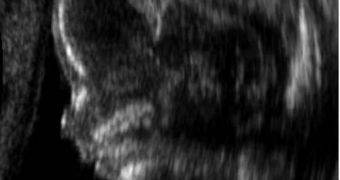Ultrasound imaging has been used for quite some time now for various types of screening, but is most renowned for giving would-be mothers a view of their unborn children. Up to this point, employing it for investigation purposes has been the sole means of putting the technology to good use in the medical field, but now experts have finally managed to create an ultrasound device that is able to remove damaged brain tissue from the brain, without the need of cutting the skull or invading the brain in any way. The technology, reported in Technology Review, is dependent on a Magnetic Resonance Imaging (MRI) machine to give it a view of the targets it needs to remove.
According to a new Swiss study, published in the latest issue of the journal Annals of Neurology, the high-intensity focused ultrasound (HIFU) method works by creating powerful ultrasound waves from a special instrument. The beams are then focused precisely on small portions of brain tissue that have been marked for deletion. When they heat, the ultrasounds heat up the respective area from its center, essentially burning all the diseased cells in the area. In human trials, nine patients suffering from brain damage and acute headaches successfully underwent the procedure, proving it was safe to humans.
“The groundbreaking finding here is that you can make lesions deep in the brain – through the intact skull and skin – with extreme precision and accuracy and safety,” University of Virginia Neurosurgeon Neal Kassell, who has not been directly involved in the new research, explains. He is the chairman of the Charlottesville, VA-based, nonprofit Focused Ultrasound Surgery Foundation, whose aim is to research and develop novel uses for focused ultrasound technologies.
“You take a CT scan of the patient's head and tailor the acoustic beam to focus through the skull. Thermal images acquired in real time during the treatment allow the surgeon to see where and to what extent the rise in temperature is achieved,” the Head of the neurology program at the Israel-based ultrasound technology company InSightec, Eyal Zadicario, adds. This was the company that created the new system for successfully focusing the ultrasound beams directly onto the human brain.
“The precision and accuracy [are] considerably greater with ultrasound, and it should be in principle safer in the long run,” Kassell says of the new technology. With radiotherapy, for example, it can take days and weeks before the radiation kills off the diseased tissue, and some of the surrounding cells. But with HIFU, the effects are immediate, and can be assessed as soon as the operation is completed.

 14 DAY TRIAL //
14 DAY TRIAL //